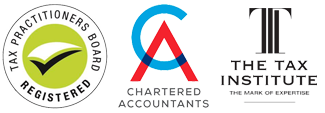Business outlook positive despite the impact of Omicron says new Deloitte report
Despite the ongoing impact of COVID-19, things are looking up for Australia according to the findings of the latest Deloitte Access Economics Business Outlook report.
Chris Richardson, Partner, Deloitte Access Economics reports despite the ongoing battle with COVID and the possibility of mutations and new strains, Australia is well placed for recovery. Richardson says while the recovery will be patchy in 2022, families and businesses are savvier at living with COVID. Globally, he says, the greatest success is likely to go to those nations whose populations are triple vaxxed with high vaccination rates.
Currently, Australia has one of the highest rates of double vaccinated citizens in the world and the nation is well on its way to getting the majority of Aussies are triple vaxxed.
“Australia is now much more match fit for fighting COVID: we’re well vaccinated, we’ve got the hang of juggling lockdowns and other COVID challenges, and we’re cashed up with dollars leftover from when the pandemic meant that money couldn’t be readily spent. That combination spells resilience and recovery,” explains Richardson.
“But Omicron has gone vertical, and it won’t be the last mutation for us to fight. China’s economy has softened in ways that particularly challenge us. And the markets wrested control of the cost of money away from the RBA, notably raising the cost of two- and three-year fixed-rate loans at a time when borrowings have leapt.
“The good outweighs the bad. It has been doing that for a while – for all its challenges, 2021 recorded the fastest growth in the Australian economy since 2007, making it the second-fastest growth seen in the past two decades. Deloitte Access Economics sees 2022 as a similar story, with Australia’s growth remaining above average as pandemic damage to the economy continues to be repaired,” says Richardson.
With COVID infections impacting supply chains across the country, Deloitte suggests businesses more pricing power than they’ve had in decades. Add to this higher energy prices and a weaker $A, and consumer prices have spiked. Currently, price rises are outstripping wages, so unless wage gains increase significantly, inflation will ease.
And while stimulus is being wound back, Richards says we won’t end up with interest rate rises like those of the past.
“Our inflation risks are less: we will pick up a deflationary impulse from China’s slowdown, we haven’t suffered the Great Resignation seen in the US, price increases here have so far only been in a narrow range of products, and most wage agreements are struck over several years. That gives the Reserve Bank the luxury of time. And it really should take advantage of that amid today’s highly uncertain environment.”

Job market explodes
Australia’s closed borders have led to an exploding job market with job vacancies continuing to rise. If this continues, Deloitte predicts the unemployment rate could reach as low as 4 per cent by the end 2022.
“Popular opinion sees the secret sauce of our job joy as closed borders. And it’s true that closed borders help explain huge vacancies across IT, farming, retailers and hospitality. Yet that’s just a one-off effect – ongoing migration generates as many jobs as it fills (in the exact same way that having children eventually generates as many jobs as it fills). Rather, the key driver of Australia’s exuberant job rebounds has been the pedal to the metal support for the Australian economy of governments and the Reserve Bank,” says Richardson.
Expect a budget blowout
The Deloitte report suggests we should also expect budget blowouts for a while to come… but don’t blame COVID.
“Federal and state budgets are in trouble. As we’ve said for some time, that isn’t because of the pandemic. Yes, COVID has been costly, but those costs are ultimately temporary. But while we were glued to our daily dose of the Gladys and Dan show, the cost of running Australia rose.
“That’s because (1) we’ve underspent on social services for years, so the budget in May 2021 added an ongoing $15 billion a year in social spending, and the budget update at end-2021 added a further $10 billion a year (mostly on the NDIS). And at the same time (2) the world has become a more dangerous place for Australia. That makes for more expensive defence costs too. Allowing for these building cost pressures, the federal budget looks likely to settle at ongoing annual deficits of over 3 per cent of national income.
Slow going for arts, tourism and hospitality
While 2022 may well avoid large and lengthy lockdowns, Omicron’s rise is likely to make low touch, low trust and low density a focus compared with pre-pandemic norms.
“So although recovery in tourism, hospitality, admin services, and arts and recreation will continue, it may be patchy and partial,” suggests Richardson.
“And COVID is running riot in ways that are playing merry hell with a bunch of ‘high touch’ industries: including trucking and distribution, as well as supermarkets and retail more widely. That pain is probably temporary, but it is huge.
“Yet the bad news for those sectors will see matching good news for sectors that fight the pandemic and protect the economy – the likes of the public sector, finance and health will stay stronger for longer during 2022 because they’ll need to, while another year of record harvests means farmers are doing even better.”
What next
The ongoing fight against Omicron will determine the speed at which Australia reintegrates, and the best economic evidence of that will be seen in consumer spending – where NSW and Victoria dropped off the pace during lockdowns.
Looking longer-term, the increasingly long running nature of the coronavirus crisis suggests that an echo of some COVID patterns (with the bigger states struggling and the smaller states prospering) will linger on,” concludes Richardson.





